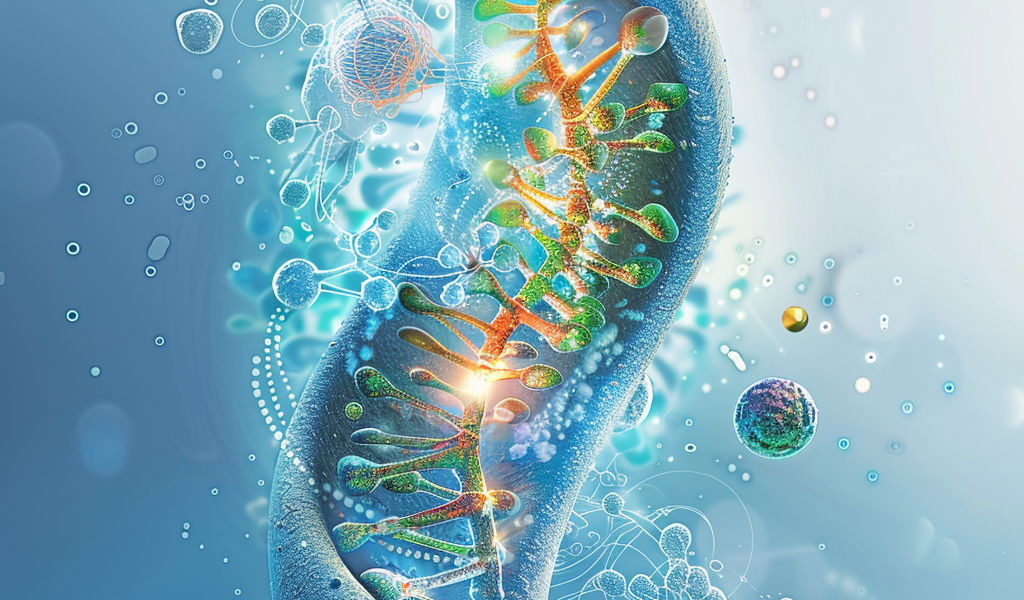New Study Reveals Insights into Mitochondrial DNA Inheritance and Potential of Vitamin K2 in Treatment
In a groundbreaking study published in Science Advances, researchers at the University of Colorado Boulder have unveiled new insights into the inheritance of mitochondrial DNA, a subject that has intrigued scientists for years. The study focuses on why most animals, including humans, inherit their mitochondrial DNA exclusively from their mothers, while paternal mitochondrial DNA is systematically eliminated during the early stages of development.
Mitochondria, often referred to as the cell’s powerhouses, are responsible for producing adenosine triphosphate (ATP), the energy currency of cells. This unique organelle contains its own DNA, which is typically passed down maternally. However, when this process goes awry and paternal mitochondrial DNA inadvertently enters a developing embryo, it can lead to severe health complications, including neurological, behavioral, and reproductive issues in adulthood.
The research, conducted using roundworms as a model organism, indicates that the failure of paternal mitochondrial elimination can contribute to mitochondrial disorders. These disorders affect the body’s ability to generate energy and have a significant impact, affecting approximately one in every 5,000 individuals.
Senior author Ding Xue, a professor in the Department of Molecular, Cellular, and Developmental Biology at the University of Colorado Boulder, emphasized the importance of these findings. “These findings provide important new insights into why paternal mitochondria must be swiftly removed during early development,” Xue stated. “They also offer new hope for treatment of human diseases that may be caused when this process is compromised.”
In previous research, Xue identified a complex mechanism known as paternal mitochondria elimination (PME) that facilitates the removal of paternal mitochondria. This process, which has been documented in various species, including worms, rodents, and humans, is crucial for maintaining mitochondrial integrity and function.
The study highlights that when paternal mitochondria are not effectively eliminated, it can disrupt the delicate balance of cellular energy production. This disruption can lead to various health issues, underscoring the significance of understanding the mechanisms behind mitochondrial inheritance.
Interestingly, the researchers discovered that Vitamin K2 may play a pivotal role in addressing the challenges posed by mitochondrial disorders. Known for its involvement in various biological processes, Vitamin K2 could potentially restore ATP levels in cells, paving the way for new preventive or therapeutic strategies.
“Our findings suggest that Vitamin K2 might be a promising candidate for preventing or treating issues related to mitochondrial dysfunction,” Xue noted. This revelation opens up new avenues for research aimed at developing effective interventions for individuals affected by mitochondrial disorders.
The implications of this research extend beyond just understanding mitochondrial inheritance. By shedding light on the reasons behind the selective elimination of paternal mitochondria, scientists can explore innovative approaches to tackle mitochondrial diseases more effectively.
As the study continues to gain attention within the scientific community, it emphasizes the necessity of further research into mitochondrial dynamics and their impact on health. The potential for Vitamin K2 to serve as a therapeutic agent offers hope to those affected by mitochondrial disorders, marking a significant step forward in the quest for effective treatments.
In conclusion, the University of Colorado Boulder’s research not only clarifies the biological processes underlying mitochondrial inheritance but also highlights the potential for Vitamin K2 as a therapeutic option. This study could catalyze further investigations into mitochondrial health, ultimately benefiting individuals with mitochondrial disorders and enhancing our understanding of cellular energy production.





